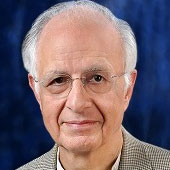Three Scenarios for India’s Future
What are the steps required for India to have a brighter future?
December 17, 2013

Amidst much pessimism, I am an India optimist. I hear and see change happening that gives me hope for India’s future.
Why I Am an India Optimist
Three Scenarios for the Future
Inclusion, Governance and Enterprise Strategy
Learning to Collaborate, Learning to Implement
Economic Future and Coalition Politics
Others hear contention and see confusion. They despair that India cannot get its act together. But I see patterns that gives me confidence that India is coming together.
To see the real patterns and to understand the ‘fundamentals,’ one must look deeper, at longer historical forces. And one must also step back, to see the ‘big picture’ which brings together many forces, including social, political and environmental forces that shape economic outcomes.
It is not sufficient to look just at the economic numbers, of stock market swings and GDP changes that are resultants of these underlying fundamental forces.
The ‘fundamentals’ of societies and economies that enable them to make real progress are their institutions. When progress is stalling, often it is institutions that must be reformed. They provide the power to progress.
What I see is that India’s democracy is awakening to the need to improve the country’s institutions. What citizens are saying to leaders is this:
We have lost trust in the country’s government institutions, and even the country’s big businesses. They say that these institutions are not serving the needs of people. They are mostly looking after their own. Citizens want leaders to fix the institutions.
Scenarios and Leverage Points for Change
In the financial and business media, the discussion of the futures of countries is framed too narrowly in terms of the conditions of the countries’ economies only. In this framing of countries as (merely) economies, which way the country will go in the future is gauged by how much its GDP will grow.
However, how much GDP will grow in the medium and long term can be assessed only by an understanding of deeper social, political and environmental forces – and not by tracking economic numbers only.
The need to understand what is really happening in India, an especially complex country, required combining insights into many forces, not merely the economic forces usually tracked by economists.
This effort led to the use of techniques of systems thinking and scenario planning for the first time by India’s Planning Commission in 2012 when it was developing the country’s 12th Five Year Plan. It is worthwhile to dwell a moment on how these techniques were used and what they have revealed.
The whole elephant
Paradoxical as it sounds, insights into all the forces shaping a complex system can emerge from a process akin to bringing all the blind men together who are touching different parts of the elephant. Each sees an incomplete reality, based on which he jumps to a conclusion about the nature of the whole beast.
Only when many of those blinded by their ideologies, societal associations and academic disciplines combine their views can the shape of the beast be fully seen.
To prepare the India scenarios, the Planning Commission brought together leaders from civil society and business, as well as economic, environmental and strategic think tanks, to listen to each other. This was used to prepare a diagram of the whole system on the basis of their pooled insights. Experts in facilitation of dialogue and systems’ analysis guided the process.
The outcome of the process was a description of three plausible scenarios of India’s future. These scenarios have been published along with India’s 12th Five Year Plan.
India’s future, in three scenarios
The scenarios describe what will determine whether or not India’s GDP will grow as large as the BRICs analysis had projected, which was based almost entirely on economic ‘fundamentals’. Indeed, there is fear that the BRICs framework (and other economic projections that had come to similar optimistic conclusions) may have been wrong.
This is now leading to a debate between pessimists and optimists about India’s future.
An understanding of the deeper forces and the directions these forces are taking – and not merely the trends in GDP, investments and savings and such purely economic numbers on the radar of economists – is required. Otherwise, one cannot determine whether one should be pessimistic or optimistic about India’s future.
My own optimism comes from using the lens of the scenarios to understand whither India. The systems analysis reveals three plausible scenarios of India. In the public debate, they have evocative titles: The Flotilla Advances; Muddling Along; and Falling Apart.
(In the official Plan document, the slightly more bureaucratic version of the titles of the three scenarios are: Strong and Inclusive Growth, Insufficient Action, and Policy Logjam.)
Stakeholder alignment
The principal difference among the three scenarios is the quality of alignment (or lack thereof) among the stakeholders in the great Indian enterprise:
- the Indian states and the center
- between government, business and civil society
- and alignments within these stakeholder groups too
The closer all of these stakeholders come to a shared vision of the best course for the country and act accordingly, the faster will be the country’s progress towards its goals of more inclusive, more sustainable and faster growth.
The longer stakeholders take to come into alignment – in other words, the longer the country ‘muddles along’ – the greater the negative fall-out on its progress will be. In the worst scenario, prolonged delay in alignment can result in the India growth story falling apart.
The poet Iqbal had described the hope that a new vision can give. I paraphrase his poetic Urdu words. He said:
“A vision that gives hope is like the pale light on the horizon that precedes the dawn. It dimly shows a path from where I stand towards the horizon I must reach. As the light strengthens just a little more, I begin to see green shoots of grass beneath the frost on the path before my feet.”
Continue to part II.
Takeaways
The ‘fundamentals’ of societies and economies that enable them to make real progress are their institutions.
The systems analysis reveals 3 scenarios for India: The Flotilla Advances; Muddling Along; and Falling Apart.
The longer stakeholders take to come together the more likely it is that India's growth story falls apart.
“Hope is the pale light on the horizon ... It shows a path from where I stand towards [where] I must reach." - Iqbal

